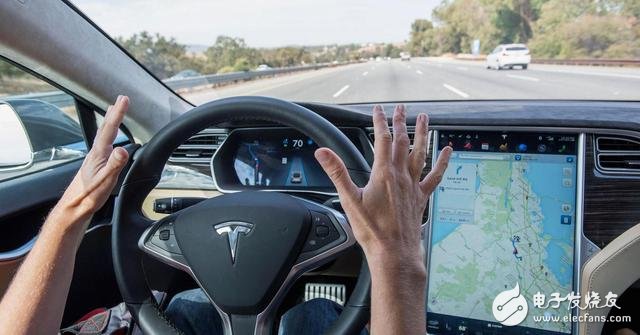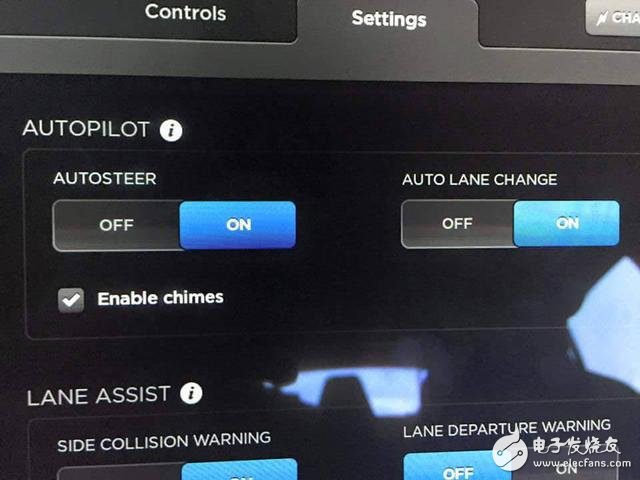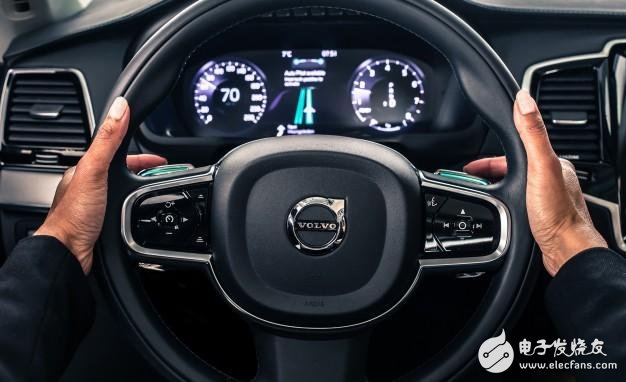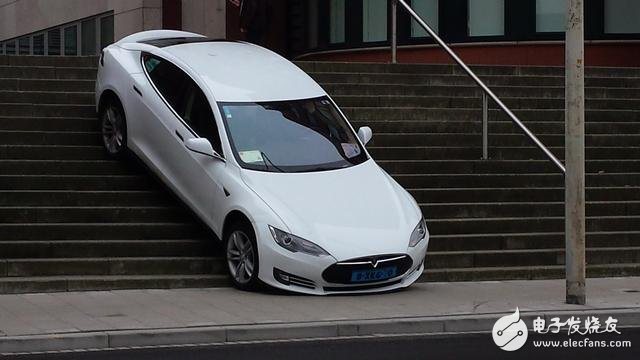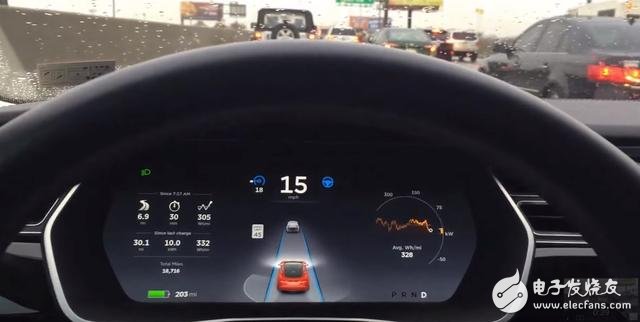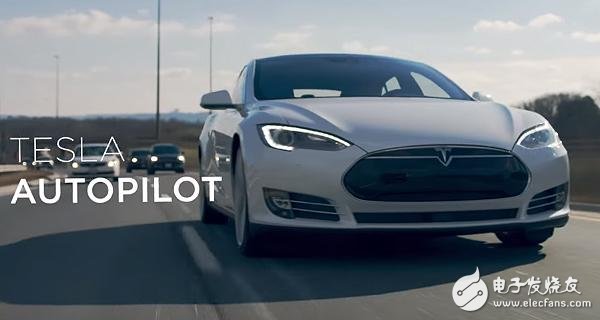Recently, many of my friends who are not aware of the truth but are more local are asking me a similar question. When buying a car, I always see concepts like assisted driving and automatic driving. If a car has such a function, can it be opened in the same way as a car in a movie? Here, as an old driver, in addition to expressing envy and hate (because it is not necessary to know that a car with such a function is not a BBA top three, Volvo is a luxury car like Tesla), finally have the opportunity to be friends in the local area. I was amazed in front of me. It doesn't matter if you can't afford it, but it's still necessary to have a chance to give a local friend and a friend who doesn't know much about autonomous driving. In everyone's impression, the driver is completely eliminated, and the whole process is automatically completed by the car system, including starting, driving, parking, and other signal lights. These fully automated operations are not automatic driving, but the next stage of development of autonomous driving. Can be seen as the ultimate goal of the development of the automotive industry, called unmanned. It’s no stranger to mention that no one is driving. A little attention to our channel’s friends must have seen a lot of news about Google’s testing of driverless cars. Google's driverless car uses a very aggressive design, even completely abandoning the steering wheel and various pedal controllers. All driving and operation are done by the system. Passengers can completely relax in the car, what they want to do, even beautiful. It doesn't matter if you sleep. However, it is this too radical design that has generated considerable differences within Google, and the US government does not allow this. Even if you are a driverless car, you must design components such as a steering wheel and control pedal to get on the road. Therefore, we will see the recent establishment of Waymo New Company by Google to separate the driverless car and cooperate with the traditional car manufacturers to provide driverless systems and software services. As for the autopilot we often hear in car ads or 4S shop sales staff, it actually acts more like “assisted drivingâ€, and its role is more to provide more convenience and safety for our daily driving. Through technology to compensate for the lack of driving skills and reaction time of human drivers. For example, the adaptive cruise system, lane keeping, automatic braking, and automatic parking that we often hear are all within the scope of the automatic driving function. Simply put, autonomous driving is not unmanned, but an initial stage of driverless driving. Therefore, as a primary stage technology, even if you have an automatic driving function, you still need the driver to operate the car according to normal driving requirements and standards. The hands can't leave the steering wheel, and the line of sight still needs to remain in the road ahead. At present, the most famous autopilot technology is the Autopilot function from Tesla. At the beginning of this year, various accidents have also pushed Autopilot and Tesla to the cusp. Autopilot is an auto-driving function that Tesla has equipped for its electric vehicles, but it was once mistaken for being unmanned by the outside world. Therefore, although Tesla has repeatedly asked the owner to leave the steering wheel after turning on the Autopilot function, it still Some owners didn't read Autopilot's instructions carefully, but when they were driving, they were distracted and hands were doing other things and completely handed over control to Autopilot. Eventually, there were various levels of accidents, even American owners. This is a death. After many accidents, Tesla also began to change the tone, turning the concept of Autopilot as an unmanned driver into assisted driving. Now that Tesla's Autopilot system is working, the dashboard will issue an "two-handed steering wheel" alarm, and the driver must grip the steering wheel to release the warning. If the driver responds quickly, the system will operate normally. If the driver does not respond within 15 seconds of the warning, the automatic steering system will end the work, the vehicle will decelerate or even stop, and the warning will be issued again to ask the driver to tighten his hands. Hold the steering wheel until the driver responds. In addition to Tesla, Volvo also puts forward the premise of "the hands must be placed on the steering wheel" for the automatic driving function. Volvo has built-in sensors on the steering wheel. When the driver's hands leave the steering wheel for more than 8 seconds, the automatic driving assistance is released, forcing the user's hands to return to the steering wheel. In fact, in addition to requiring the driver's hands not to leave the steering wheel, GM took a different approach to the safety of autonomous driving. The GM's autopilot feature, called Super Cruise, allows the driver's hands to leave the steering wheel for a long time, but requires more concentration. So even if your hands are gone, you don't want to do anything else. The system will allow the driver to drive the car on the highway, but if there are too many turns on the road, or if the vehicle detects that the driver is not concentrating, it will issue a series of alerts. If the driver does not take over, the vehicle will automatically decelerate and then turn on the hazard light. Simply put, this is a system based on road conditions and driver status detection. If the road is "straight", the system can handle it, but if there are too many corners, the system will alarm. At the same time, there is a driver detection system in the car to monitor the status of the driver at any time. If the driver is found to be dozing off or absent-minded, the system will also issue an alarm. And if the driver turns a deaf ear to the alarm, then in the end it will also face a forced deceleration until the side stops "punish". In fact, whether it is Tesla, Volvo or GM, the reason why even if you can't leave the steering wheel when you turn on the autopilot, the main reason is that with the current technology, there is still a considerable gap between the autopilot and the driverless. Whether it is sensors, cameras and other hardware or system software, it is not enough to fully cope with complex traffic conditions. Currently, the US Highway Traffic Safety Committee (NHTSA) divides driverless technology into five levels: Level 0: The driver has 100% control and the vehicle does not have any safety system auxiliary equipment. At present, most vehicles belong to this level; Level 1: Vehicles have single or multiple independent functional electronic control systems, such as automatic emergency braking systems, which are more likely to belong to this level in the future; Level 2: At least two controls can be automated, such as a combination of active distance control cruise system and lane maintenance system; Level 3: The vehicle has automatic dodge obstacles, self-guidance, active control, etc., but the driver still has control rights; Level 4: The vehicle is fully automatic. The user only needs to give relevant information, such as destination, route, etc., and the vehicle cannot be changed to manual driving. Therefore, from the classification of NHTSA, the most advanced automatic driving technology on the market basically belongs to the stage of level 2 to 3, so the driver still needs to have absolute control over the car. When we drive a car on the road, we will always encounter a variety of different complex road conditions and emergencies, and for the old driver, how to handle all kinds of situations handy, has become a big test, For the novice, it is a process of accumulation. The same is true for driverless and autonomous driving. Automated driving is equivalent to “newbieâ€. The capabilities of various sensors and sensors are limited, and some lack laser radar, so they cannot fully cope with complicated road conditions and problems. Driving is equivalent to many years of "old drivers". Whether it is experience, hardware or system algorithms, it is quite mature, so that human drivers can safely give control of the vehicle to the driverless system. As mentioned above, the current mainstream autonomous driving technology stays in the unmanned stage of level 2 or level 3, and the next development goal of autonomous driving is to give more control to the system, giving the driver more The liberation came out. At present, many manufacturers have set their own driverless cars to be released or set on the road in 2020 or 2021. This also indicates that many manufacturers realize that there are still quite a few difficulties in achieving true driverless driving. However, even in 2020, it is only the initial stage of driverless driving. The control of auto technology is still limited. It is expected that manufacturers can only improve the safety of driving and simple driverless services. At the same time, in addition to the technological development itself, national legislation, vehicle testing, inspection and licensing licenses also take time to adapt to unmanned technology. At the same time, for drivers and pedestrians of non-drivers, how to coexist with unmanned vehicles and change the travel and driving habits they have developed are also factors to be considered after the development of driverless technology. For the next phase of development of driverless technology, it will focus on improving vehicle design, software services and significantly reducing the probability of traffic accidents. Therefore, before the automatic driving technology fully transitions to the unmanned driving, the driver's hands on the steering wheel and the concentration of attention are the last line of defense to ensure our safety. It is said that technology is people-oriented. In fact, for autonomous driving, people are actually the "benefits" of technology. For industrial control environment wired communication equipment and wireless communication equipment. Wired communication equipment mainly introduces serial equipment communication for industrial field, professional bus-type communication, industrial Ethernet communication and conversion equipment between various communication protocols, including routers, switches, modems and other equipment. Wireless communication equipment mainly includes wireless AP, wireless bridge, wireless network card, wireless lightning arrester, antenna and other equipment. Communications also include military communications and civilian communications Communication Pcb,Wireless Communication Pcb,Optical Communication Circuit Board,Printed Communication Circuit Boards Chuangying Electronics Co.,Ltd , https://www.cwpcb.com